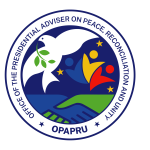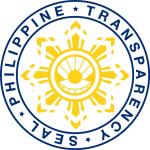INTRODUCTION
Brief History of the Conflict
The Government of the Philippines (GPH) has long sought to find ways and means to address the discontent of the Moros in Mindanao. However, efforts in the past have been criticized as mainly assimilationist, without regard to their special characteristics and desire for the right to self-government.The Moros claim a distinct history and way of life from the majority
The Moros claim a distinct history and way of life from the majority Filipinos who were incorporated in the Spanish colonial regime. They claim that they were annexed to the Philippine territory under the American regime, and later in the independent Philippine Republic, without their consent. As a result of economic policies, new land laws, and migration programs that began in the 1900s, the Moros have become minorities in their traditional abode. Today, the Muslim-dominated provinces in Mindanao are among the poorest provinces in the country with per capita incomes and human development indices below the national average. In national politics and society, they feel they are discriminated and marginalized. All these have built-up resentment that was mobilized in the form of armed movements against the Philippine state.The armed conflict in Muslim Mindanao that began in the late 1960s
The armed conflict in Muslim Mindanao that began in the late 1960s was in the nature of an independence movement. However, since the 1976 Tripoli Agreement signed between the Marcos government and the Nur Misuari-led Moro National Liberation Front (MNLF), the terms of negotiations revolved around crafting an autonomous arrangement within the Philippine state as an expression of the Moro people’s right to self-determination.The 1987 Philippine Constitution called for the establishment of an
The 1987 Philippine Constitution called for the establishment of an autonomous region in Muslim Mindanao. The Congress subsequently passed two organic acts for the establishment of the Autonomous Region in Muslim Mindanao (ARMM) – the Republic Act No. 6734 in 1989, and the Republic Act No. 9054 (amending Republic Act No. 6734) in 2001 as part of the terms of Final Peace Agreement (FPA) signed between the MNLF and the Ramos Administration in 1996. Yet, these proved unsatisfactory to both the MNLF and the Moro Islamic Liberation Front (MILF), a break-away group of Moro leaders led by Salamat Hashim that was formally constituted in 1984. The MNLF claimed that several key provisions in the 1996 FPA remain unimplemented. The MILF, for its part, wanted the highest form of autonomy while remaining an integral part of the Philippine territory.
The GPH has pursued peace negotiations with the Moro liberation groups in order to end the armed conflict, address the social, cultural and economic inequities, and arrive at a viable political arrangement that will reconcile the ideals of Moro self-government, good governance, and national sovereignty.
1997-2000: First Stage of GPH – MILF Peace Negotiations
The peace negotiations from 1997 to 2000 could be characterized as revolving mainly around security issues. Mechanisms such as the Coordinating Committee on the Cessation of Hostilities (CCCH), Ad Hoc Joint Action Group (AHJAG), and the International Monitoring Team (IMT) were established. Confidence-building measures and ceasefire agreements were firmed up in the early stages of the negotiations.
During this period, negotiations were conducted in Mindanao without third party facilitation or mediation. But the all-out war in 2000 halted the conduct of the peace talks and caused the withdrawal of the MILF from the negotiating table.
2001-2014: Second Stage of GPH – MILF Peace Negotiations
This stage is marked with the involvement of international players, particularly Malaysia as the third party facilitator. The talks entered into substantive discussions outside of the cessation of hostilities and rehabilitation and development, such as discussions on the political settlement and the details of the arrangement for autonomy and self-governance.
The MOA-AD
The draft Memorandum of Agreement on Ancestral Domain (MOA-AD) was finalized and initialed on 27 July 2008, and was scheduled for signing on 5 August 2008 in Kuala Lumpur, Malaysia. However, it was restrained by the Supreme Court on the same day. Serious objections to the draft agreement by local officials in the affected areas and the attacks from renegade MILF elements on civilian communities in several parts of Mindanao prompted a policy decision. The non-signing triggered attacks from renegade MILF elements and more than 500,000 people were displaced as a result of the fighting. By November 2008, Malaysia decided to pull out its contingent in the Malaysian-led IMT.It would only be on July 2009 that backchannel efforts led to the effecting of the Suspension of Military Operations (SOMO) by the government forces and the Suspension of Military Actions (SOMA) by the MILF.
It should be noted that the ill-fated MOA-AD was NOT envisioned or intended to be the GPH-MILF Final Peace Agreement. Even if the MOA-AD were signed, the mechanisms and modalities of governance would still have had to be spelled out in a Final Peace Agreement/Comprehensive Compact.It only discussed the last of the three (3) substantive aspects of the
It only discussed the last of the three (3) substantive aspects of the 2001 Tripoli Peace Agreement (the two earlier aspects being Security Mechanisms and Rehabilitation and Development, which have been earlier agreed upon). Negotiations conducted post-MOA-AD highlight several important mechanisms such as the formation of the International Contact Group (ICG). The ICG is primarily mandated to exert the necessary leverage and assistance towards sustaining the trust and confidence of both sides at the negotiating table.
In June 2010, the Declaration of Continuity for the Peace Negotiations between the GPH and the MILF was signed. An attempt to ensure the continuity in the talks under the incoming administration of President Benigno Simeon Aquino III, it recognized the significant achievements in the negotiations, affirmed the Parties’ commitment to a peaceful solution to the conflict, and contained the Parties’ agreement to consider “new formulas that permanently respond to the legitimate aspirations of the Bangsamoro people for just peace, freedom founded on parity of esteem, equal treatment for their identity, ethos, and rights and for the Bangsamoro as a whole to exercise self-governance on the basis of consent in accordance to an agreed framework which shall be negotiated and adopted by the Parties” and “in good faith, build on prior consensus points achieved.” The Declaration thus put a closure to this stage of the peace negotiations and laid down the foundation for the continuation of the peace process into the Aquino administration.






